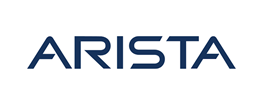- Course overview
- Course details
- Prerequisites
Course overview
About this course
This course is designed to provide you with the skills needed to be a successful project manager in today's rapidly changing world. Additionally, this course can be a significant part of your preparation for the CompTIA Project+ certification exam. The skills and knowledge you gain in this course will help you avoid making costly mistakes and increase your competitive edge in the project management profession.
In this course, you will apply the generally recognized practices of project management to successfully manage projects.
Audience profile
This course is designed for individuals in various job roles who have a basic knowledge of project management, and who participate in small to medium scale projects.
At course completion
You will be able to-
- Identify the fundamentals of project management.
- Initiate a project.
- Create project plans, stakeholder strategies, and scope statement.
- Develop a work breakdown structure and activity lists.
- Develop project schedule and identify the critical path.
- Plan project costs.
- Create project staffing and quality management plans.
- Create an effective communication plan.
- Create a risk management plan, perform risk analysis, and develop a risk response plan.
- Plan project procurements.
- Develop change management and transition plans
- Assemble and launch the project team to execute the plan.
- Execute the project procurement plan.
- Monitor and control project performance.
- Monitor and control project constraints.
- Monitor and control project risks.
- Monitor and control procurements.
- Perform project closure activities.
Course details
Module 1: Defining Project Management Fundamentals
- Identify Project Management Basics
- Describe the Project Life Cycle
- Identify Organizational Influences on Project Management
- Define Agile Methodology
Module 2: Initiating the Project
- Identify the Project Selection Process
- Prepare a Project SOW
- Create a Project Charter
- Identify Project Stakeholders
Module 3: Planning the Project
- Identify Project Management Plan Components
- Determine Stakeholder Needs
- Create a Scope Statement
Module 4: Preparing to Develop the Project Schedule
- Develop a WBS
- Create an Activity List
- Identify the Relationships between Activities
- Identify Resources
- Estimate Time
Module 5: Developing the Project Schedule
- Develop a Project Schedule
- Identify the Critical Path
- Optimize the Project Schedule
- Create a Schedule Baseline
Module 6: Planning Project Costs
- Estimate Project Costs
- Estimate the Cost Baseline
- Reconcile Funding and Costs
Module 7: Planning Human Resources and Quality Management
- Create a Human Resource Plan
- Create a Quality Management Plan
Module 8: Communicating During the Project
- Identify Communication Methods
- Create a Communications Management Plan
Module 9: Planning for Risk
- Create a Risk Management Plan
- Identify Project Risks and Triggers
- Perform Qualitative Risk Analysis
- Perform Quantitative Risk Analysis
- Develop a Risk Response Plan
Module 10: Planning Project Procurements
- Collect Project Procurement Inputs
- Prepare a Procurement Management Plan
- Prepare Procurement Documents
Module 11: Planning for Change and Transitions
- Develop an Integrated Change Control System
- Develop a Transition Plan
Module 12: Executing the Project
- Direct the Project Execution
- Execute a Quality Assurance Plan
- Assemble the Project Team
- Develop the Project Team
- Manage the Project Team
- Distribute Project Information
- Manage Stakeholder Relationships and Expectations
Module 13: Executing the Procurement Plan
- Obtain Responses from Vendors
- Select Project Vendors
Module 14: Monitoring and Controlling Project Performance
- Monitor and Control Project Work
- Manage Project Changes
- Report Project Performance
Module 15: Monitoring and Controlling Project Constraints
- Control the Project Scope
- Control the Project Schedule
- Control Project Costs
- Manage Project Quality
Module 16: Monitoring and Controlling Project Risks
- Monitor and Control Project Risks
Module 17: Monitoring and Controlling Procurements
- Monitor and Control Vendors and Procurements
- Handling Legal Issues
Module 18: Closing the Project
- Deliver the Final Product
- Close Project Procurements
- Close a Project
Prerequisites
To ensure your success, you should be familiar with basic project management concepts.
Basic computing skills and some experience using Microsoft Office are desirable but not required. You can obtain this level of skills and knowledge by taking one or more courses in Microsoft Office curriculum. For example:
- Word 2016 Introduction
- Excel 2016 Introduction
Enquiry
Course : CompTIA Project+
Enquiry
request for : CompTIA Project+




















